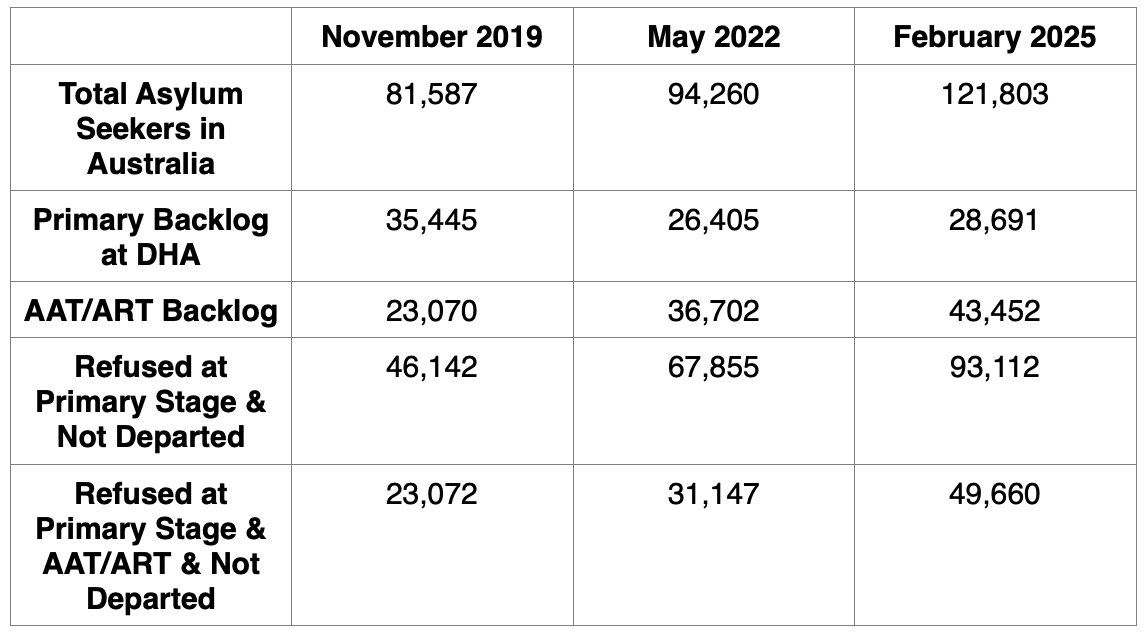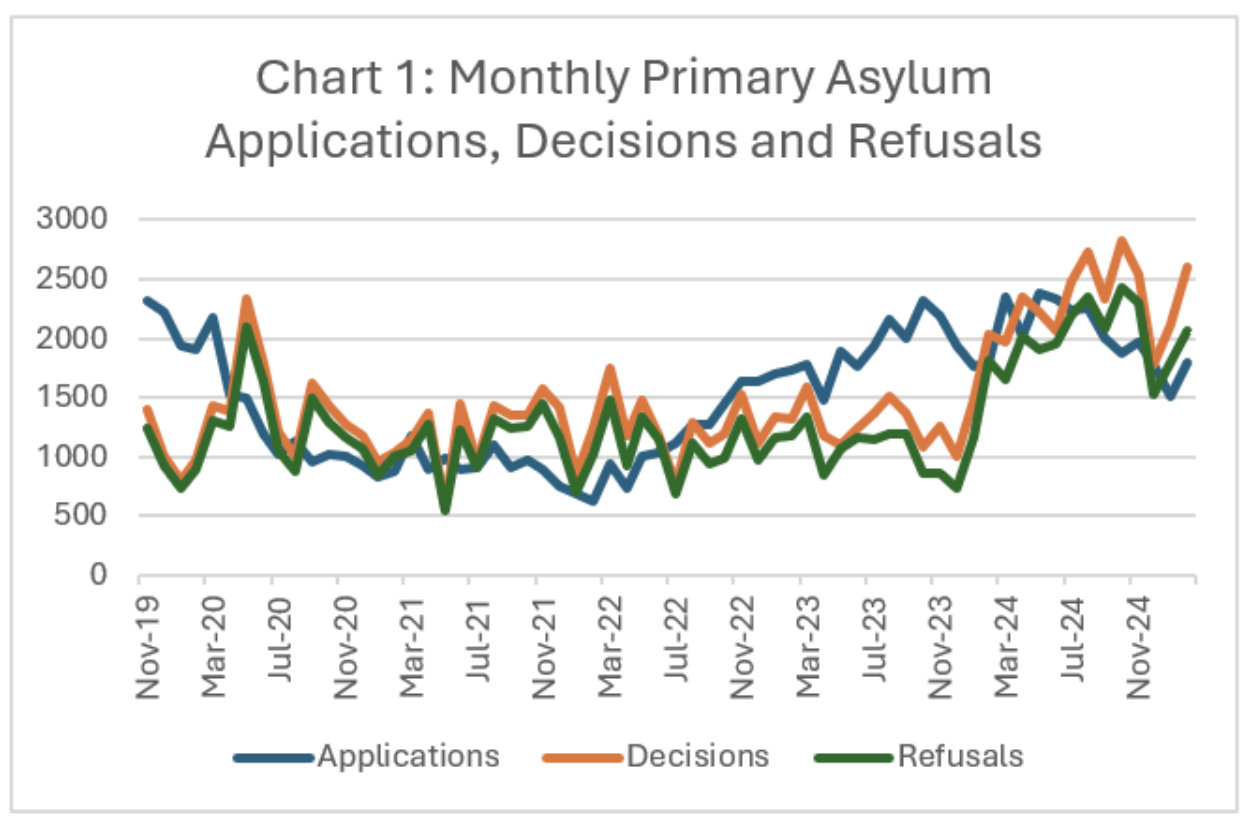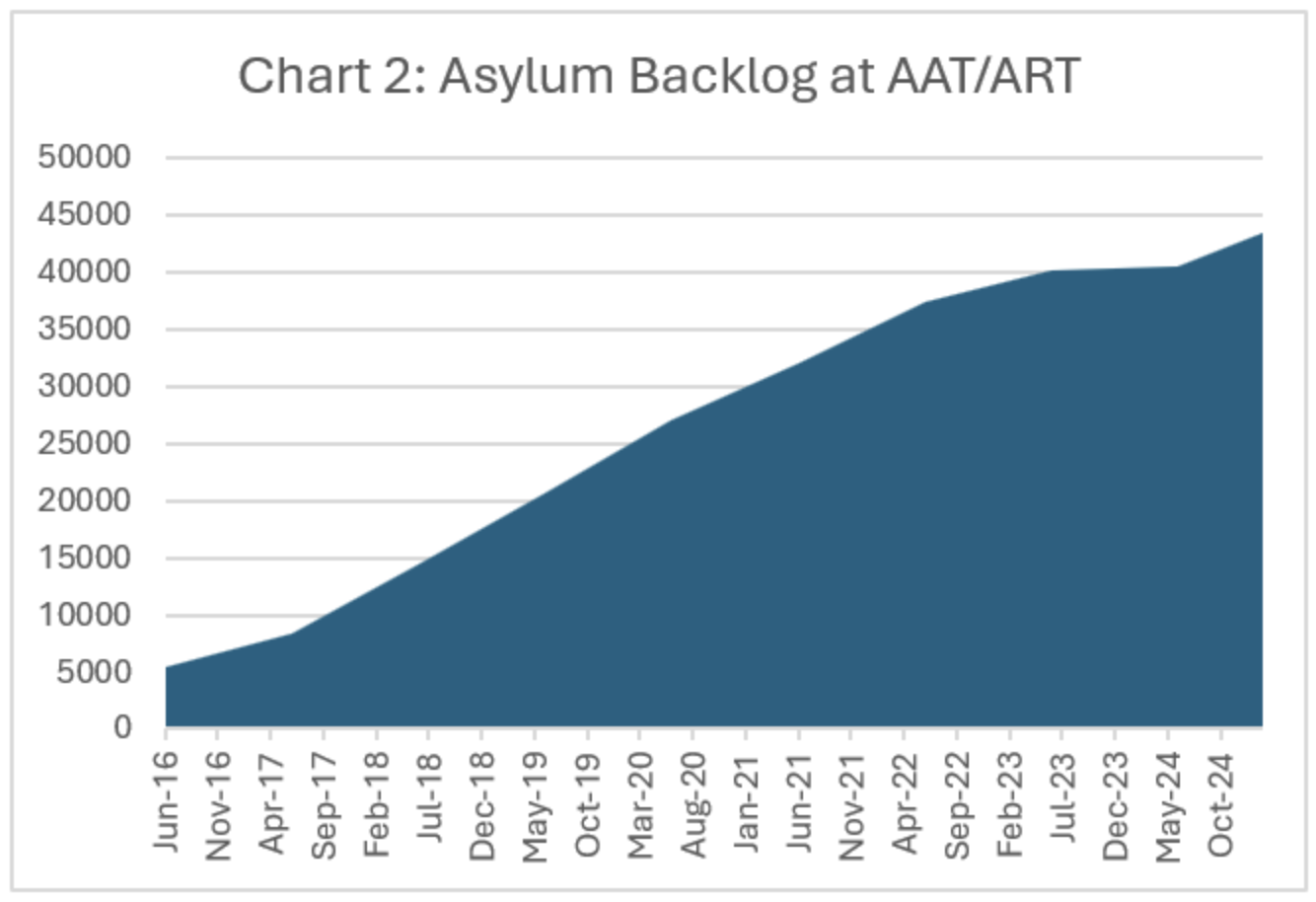Why has there been no discussion of asylum-seekers in this campaign?
April 26, 2025
Despite it being a perennial topic during Elections this century, neither major party wants to talk about asylum seekers this time around.
After 10 years of scaremongering, Peter Dutton has given up trying to tell us we are about to be invaded by an impending armada of boat arrivals. He also knows that it was his negligence that from 2015 led to the biggest labour trafficking scam abusing the asylum system in our history. That may explain why he hasn’t brought up the issue this time.
While Labor put more resources into processing asylum claims to stabilise the number of asylum applications at the primary level and at the Administrative Review Tribunal, it knows it has not done enough to stabilise growth in the number of people who have been refused at both the primary level and at the ART (see Table 1).
Following the massive growth in asylum applications from 2015-16, it became a requirement for the Department of Home Affairs to report in detail on this by a Senate Order. This took effect from November 2019.
Table 1: Asylum Seekers in Australia Since Senate Order to Report

Table 1 shows that Labor has managed to stabilise the asylum-seeker backlog at the primary stage. But the number refused at the primary stage and not departed, as well as those refused at both primary stage and AAT/ART and not departed, has continued to grow.
In the last six months, faster processing at both the primary stage and AAT appears to have somewhat reduced the monthly primary application rate from a post-COVID peak (the pre-COVID monthly peak was much higher) of 2380 in May 2024 to an average of 1820 per month in the last six months (see Chart 1).

The situation at the AAT/ART has not improved to the same degree (see Chart 2).

During the current election campaign, both major parties have swept this issue under the carpet. That is not in the public interest. We don’t want to become like either the US or Europe with a massive number of unsuccessful asylum-seekers living in the shadows of society.
What could be done?
There are five main steps government should consider:
First, additional resources to enable faster processing of applications at both primary and AAT/ART stages with a focus on the most recently lodged applications. At a minimum, both DHA and the ART need to be processing 3000 applications per month. That approach will increasingly discourage unmeritorious applications.
Second, the government needs to get serious about investigating and prosecuting those using the asylum system for trafficking or assisting highly unmeritorious asylum applications purely as a means of extending their stay.
Third, the government needs to investigate the drivers of unmeritorious asylum applications. For example, around 20% of asylum applications are from Pacific Island nations. These applications are being refused at very high rates (in many months 100%). A key driver of asylum applications from Pacific Island nations is likely to be holders of the Pacific Australia Labour Mobility visa.
This visa inevitably involves a high level of worker exploitation, not back home, but in Australia. Not surprisingly, this has led to large numbers of Pacific Island nationals applying for asylum. The Australian Government has made the situation worse by creating the Pacific Engagement Visa. This is a permanent residence visa that can only be accessed visa a lottery system that gives PALM visa holders very little chance to secure a PEV.
A change to the design of the PEV that gives PALM visa holders a better chance at the PEV, preferably through a skills development pathway, would give PALM visa holders greater hope of securing a better job and permanent residence. That would help discourage them from applying for asylum.
Fourth, the government needs to invest more in immigration compliance to locate, detain and remove the most recently refused asylum-seekers who have spent little time in Australia. Rapid removal would further reduce the incentive to make unmeritorious asylum applications.
Finally, for unsuccessful asylum-seekers who have been in Australia more than a decade, it is time to consider a carefully designed and targeted resolution of status visa. There is little point in trying to remove these people from Australia as they would have built strong ties to the local community through employment, setting up a business, or establishing a family with Australian citizens. The key to such a visa is to avoid creating incentives for unsuccessful asylum seekers to remain underground, rather than departing.

